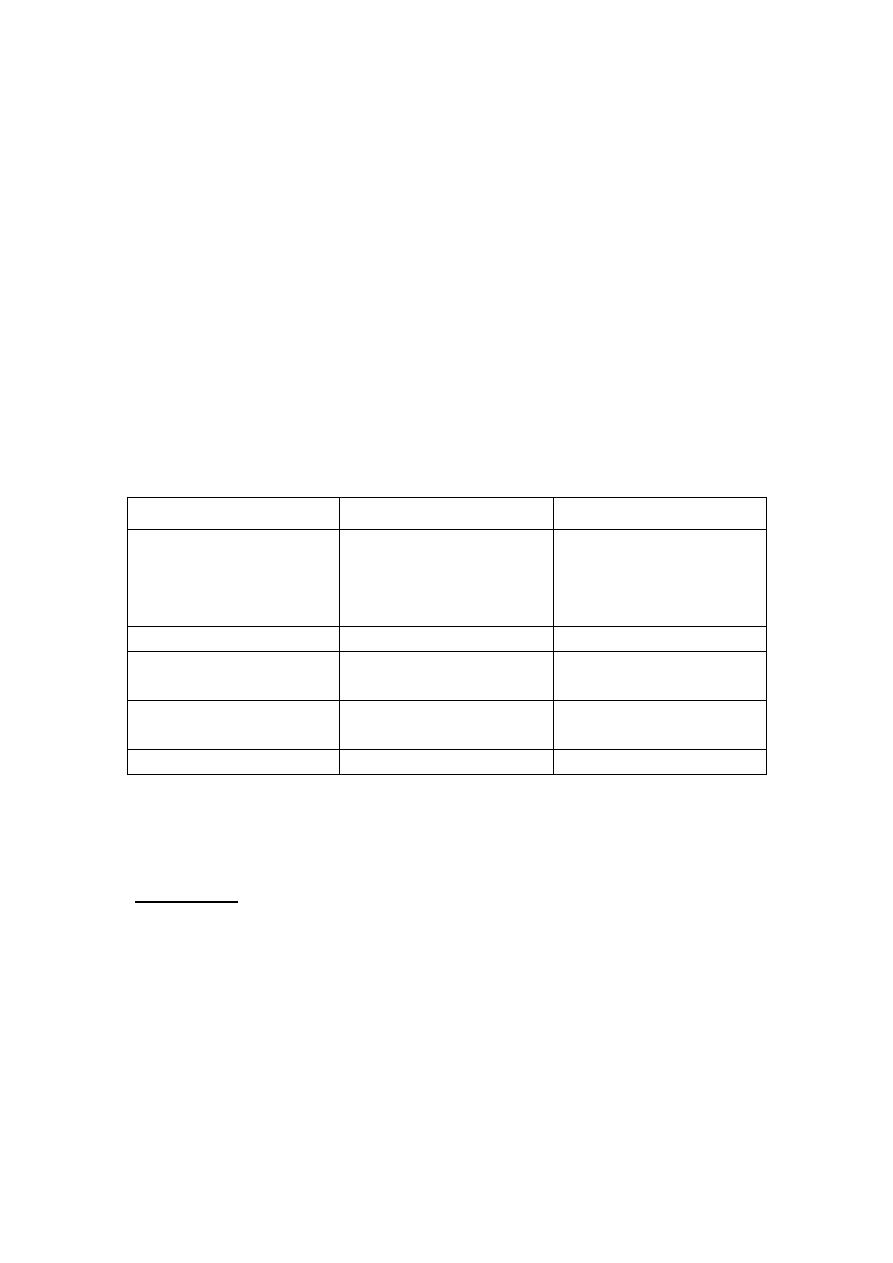
Retina
It is the innermost layer of the eyeball.
It is starts at ora serrata & ends at optic disc.
It is very thin & transparent showing the red color of choroid.
It is sensitive only to light (translates photons to electrical impulses that
reach the visual cortex and transformed into a visual sensation ).
Anatomically : the retina is divided into :
1-Central Retina :(Macula Lutea =5.5mm) the center of the macula is
an avascular depression called "fovea centralis" (1.5mm)
Function : ( Mainly cones ). Responsible for visual acuity, Color
& day vision .
2-Peripheral Retina : ends at the ora serrata.
Function : ( Mainly rods ) responsible for night vision and
peripheral filed .
Microscopical anatomy:
The retina is composed of 10 layers :
(1) Pigment epithelium (RPE):
* It is the outermost layer (in contact with Bruch's membrane of
choroid ).
*It is made of one layer of pigmented cubical cells .
(2)Phone-receptors (rode & cones): (Body)
The light sensitive layer (contains visual pigments).
(3)Outer limiting membrane.
(4)Outer Nuclear layer : It's made of nuclei of rods & cones .
(5) Outer Plexiform layer [ Hanel layer in the macula.

(6) Inner Nuclear layer.
(7) Inner pelxiform layer.
(8)Ganglion cell layer.
(9)Nerve fiber layer : It is made up of the axons of ganglion cells which
form the optic n.
(10) Inner limiting membrance :in contact with the vitreous
.
FUNCTION OF THE RPE :
(1)Nutrients & metabolites from & into the choroid.
(2)Essential for Rhodopsin (Vit. A) & Iodopsin formation.
(3)Absorption of scattered light "perfect optical image".
(4)Phagocytosis of tissue damage.
(5)Adhesiveness of the underlying sensory retina (prevents RD).
Photoreception
Rods:
1-Thin.
2-Contain Rhodopsin.
3-Responsible for night vision .(Scotopic vision).
4-Maximum concentration in perifoveal region.
5-Total number 120 milions .
Cones:
1-Thick .
2-Contains Iodopsin.

3-Responsible for day & colour vision .(photopic vision).
4-Maximum concentration in the Center(faveola).
5-Total number 6.5 milions.
RETINAL ARTERY OCCLUSION
Retinal artery occlusion is mainly caused by emboli reaching
the retinal circulation via the ophthalmic artery, a branch of the
internal carotid. The obstruction of blood flow is usually at the
level of the lamina cribrosa
.
Central retinal artery occlusion
Etiology:
1-Thrombosis : In : arteriosclerosis ( in old , DM &
hypertension ).
2-Embolism :
a-Detached thrombus : as in Myocardial infraction , aortic
aneurysms or sub-acute B.
b- Air Embolism .
c-Fat Embolism : as in –Crush injury.
3-Spasm : as in -Hypertensive Encephalopathy in young age.
-Quinine poisoning .
-Raynaud's disease , burger disease &
Migraine.
4-Arteritis : as in : -Giant cell arteritis (GCA)
-Poly arteritis nodosa.
5-Very high IOP : as
-during RD surgery
-Angle closure glaucoma
.

Signs :
(1)vision :Hand MovementNo perception of light.
(2)Pupil : *Semi dilated.
*Afferent pupillary defect :
(3)Fundus :
Early(within minutes):
Arteries : attenuated ( thread-like).
Veins: little attenuation & stagnant blood column
Retina : -White ( cloudy )
Center ( fovea ) shows cherry red spot.
Treatment : Emergency treatment
if not immediate , after 30-90 min irreversible damage to retina.
General :
1-In halation or sublingual nitroglycerin .
2-Inhalation of carbogen(5% O2 + 95% Co2).
Local :
1-Paracentesis ( leading to hypotony.)
2-Ocular massage to lower the IOP.
3-Retrobulbar vasodilators.
RETINAL VEIN OCCLUSION
Retinal vein occlusion is the commonest vascular retinal disorder after
diabetic retinopathy. It may affect the Central Retinal Vein, one or
more of its branches.

Types:
1. Central retinal vein (CRVO)
Non ischemic CRVO
Ischemic CRVO
Vasculitis ( in young adults)
2.Branch retinal vein occlusion
Central Retinal Vein Occlusion CRVO
Etiology :
1-Inside the vein : due to increased blood viscosity as in :
-Blood diseases :polycythemia , leukaemia.
-Dehydration & contraceptive pills.
2-In the vein wall :
-Phlebitis: as in typhoid , influenza ( young),
autoimmune(Behcet disease ), atherosclerosis (old age) , DM &
hypertension .
3-Outside the vein : due to pressure on vein by :
-Orbital tumor.
-Increased IOP.
-Orbital cellulitis.
Clinical picture :
Symptoms : Rapid painless diminution of vision (6/60
HM) due to hemorrhage , oedema & ischaemia of the inner layer .
Signs:
Pupil : -Dilated & sluggish direct reaction
-Afferent pupillary defect in ischemic type .

Fundus :
1-Veins : engorged & tortuous.
2-Retina : Show extensive Hemorrhage. (dots , blots & flame
shaped) edema, cotton wool exudates +micro aneurysms.
3-Macula : shows oedema & hemorrhage
4-Disc: Hyperaemic , edematous .
Classification :
(I) Ischemic. (2)Non-Ischemic
.
Ischemic
Non-ischemic
Anterior to Lamina.
cirbrosa(no collaterals)
e.g. Glaucoma .
Posterior to Lamina.
cirbrosa(good
collaterals) e.g. Orbital
tumors .
Site of obstruction
Less common20%
More common80%
Incidence
Marked drop of
vision<6/60
Blurring of
vision>6/60
Symptoms
Extensive.
Soft(retinal infarction)
Mild.
Hard.
Hemorrhage , exudates
APD
Normal
Pupil
:
Treatment
(1) Medical :
* treatment of the cause : control hypertension & DM.
* Vit. C: increase integrity of capillaries.
* Prevents platelets slickness : Aspirin in small doses (75 mg once a
time).
*Anticoagulant : may cause Hemorrhage (not used).

(2)Laser Photo-coagulation (argon)PRP :
*To destroy the peripheral hypoxic areas (anoxic)
*Regression of the neo-vessels .
*Improvement of circulation of the central area .
(3) Intravitreal :
1- Steroids (Trimcinolone acetenide): In case of macular oedema .
2-Avastin : ( anti VEGF)
(4) Treatment of Neovascular glaucoma :
* Seeing eye :
- Medical : Timolol +Diamox +Steroid locally .
- Laser (PRP) : to avoid regrowth of new BVs.
-External fistulizing + Implant.
-If failed do cyclocryotherapy.
*Non-seeing (Blind Painful eye):
-Cyclocryotherapy .
-Enucleation
.
Hypertensive retinopathy
Pathogenesis :
-Chronic mild hypertension leads to Arteriosclerotic change .
-Chronic hypertension leads to damage of vessel wall with
breakdown of blood retinal barrier & vascular leakage.

Clinical picture :
Symptoms :
-May be a symptomatic.
-Blurred vision .
-Episodes of temporary visual loss.
Fundus picture :
-Arteriolar narrowing : generalized & Focal .
-Vascular leakage :
1- Flame-shaped hemorrhage.
2-Retinal edema .
3-Hard exudates.(if in the macula macular star ) .
4-Papilloedema.
-Arteriosclerosis : in chronic hyper tension for many years.
Grades of hypertensive Retinopathy :
Grade 1: Generalized arteriolar narrowing .
Grade 2: Generalized and focal arteriolar narrowing .
Grade 3: As grade 2+Retinal flame hemorrhage + retinal exudates
+ Cotton wool spots + all sclerotic change.
Grade 4: Severe grade 3 + papilloedema + macular star + Exudative
RD.

Treatment : Control hypertension .
Weight control .
Exercise .
Sodium control .
Retinopathy of prematurity
Pathogenesis:
ROP is a proliferative retinopathy affects pre-term infants <30 weeks
or low birth weight < 1500 gm. who exposed to high O2 concentration
leads to damage of incompletely vascularized retina = temporal
periphery produce VEGF . ( Retinal-Blood vessels reach the nasal
periphery at the 8
th
month of gestation & reach the temporal periphery
one month after delivery ).
Staging :
-Stage 1: Demarcation line separate vascular from
avascular retina .
-Stage 2: Elevated ridge .
-Stage 3:Ridge+Extra retinal fibrovascular proliferation
extended from the ridge into the vitreous retinal & vitreous
hemorrhage.
-Stage 4: Subtotal RD .
-Stage 5:Total RD.
Treatment : Stage 1,2 no treatment
Stage 3 laser photocoagulation or
cyclocryotherapy for the avascular retina.
Stage 4,5 vitrectomy for traction RD.
